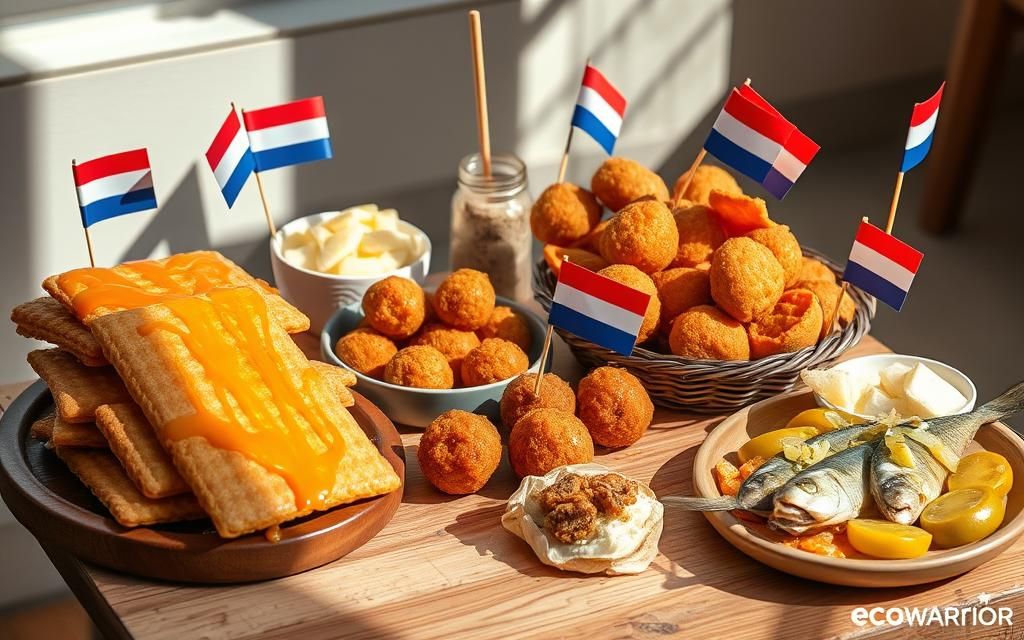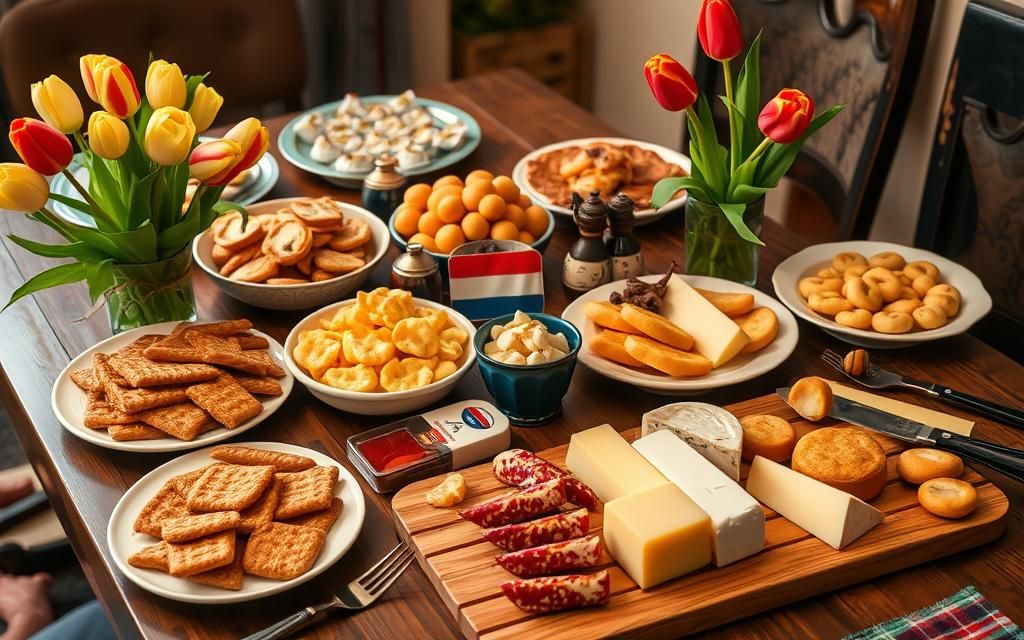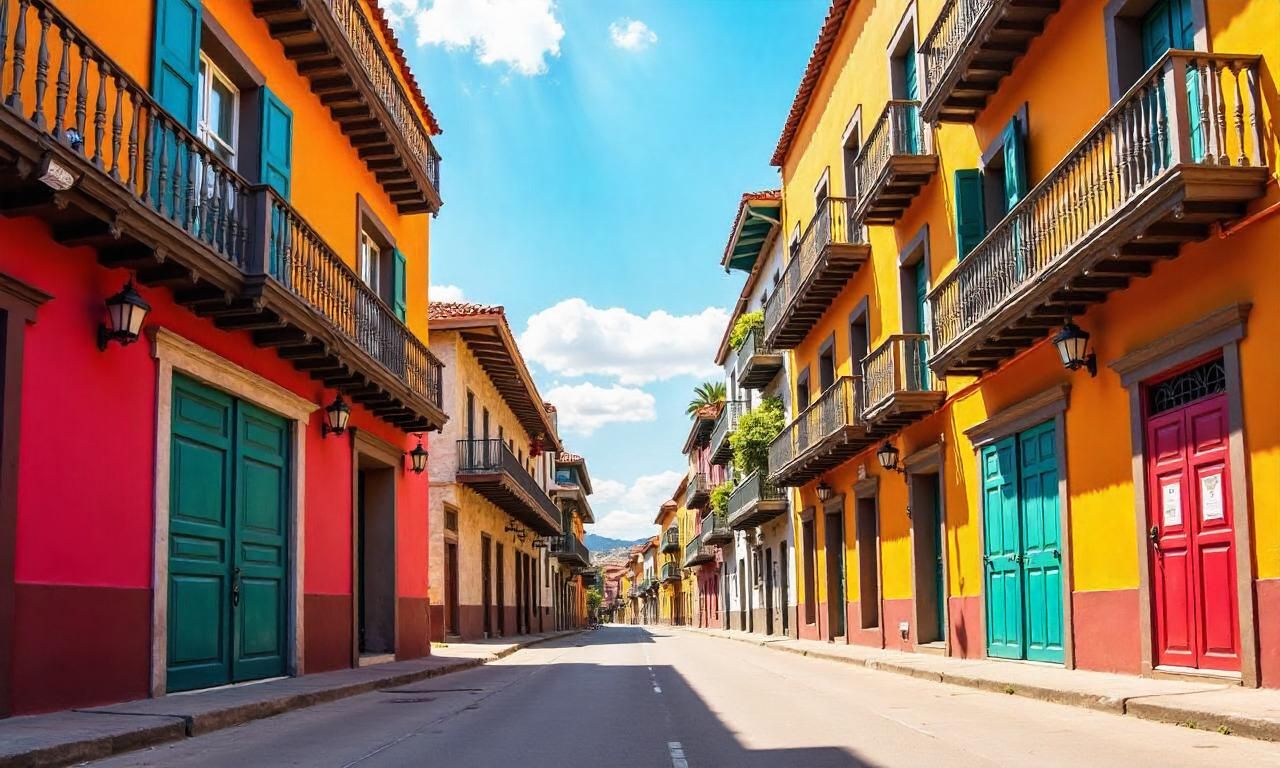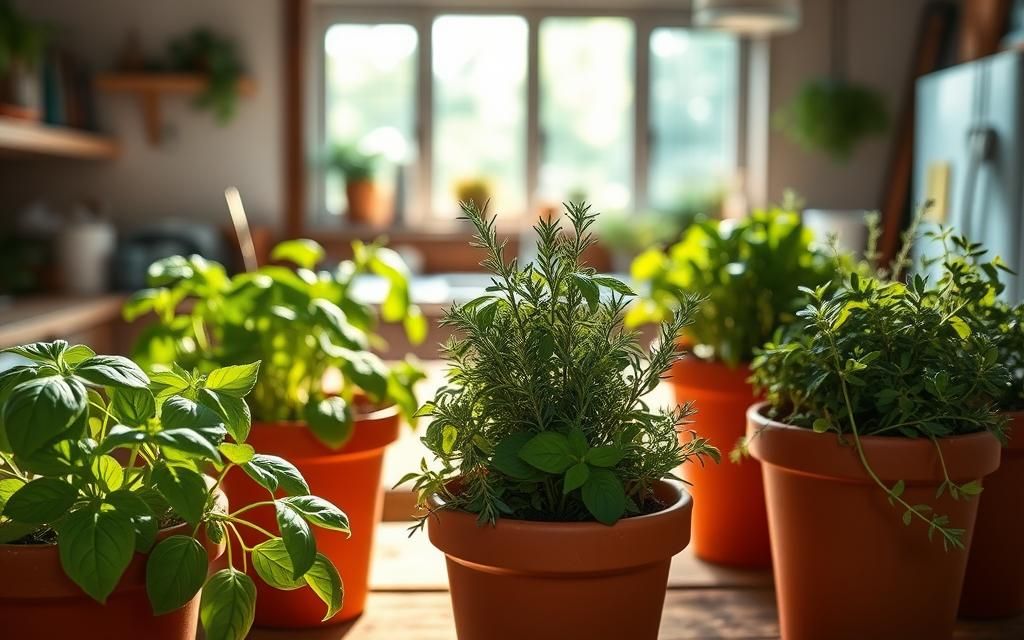We’re about to start a tasty journey through the Netherlands’ food culture. Dutch cuisine might not be as famous as some European foods, but it’s full of hearty tastes and influences from around the world. These flavors will surely make your taste buds happy.
The Netherlands has traditional comfort foods and new fusion dishes that show its diverse heritage. If you love food or just want to learn about new cuisines, this article is for you. We’ll cover the unique dishes, dining customs, and the changing food scene in the Netherlands.
Let’s dive into the exciting world of Dutch food culture. Here, old flavors meet new, creating a dining experience you won’t find anywhere else.
Table of Contents
ToggleTraditional Dutch Cuisine: A Journey Through Hearty Flavors
The Netherlands is known for its rich culinary heritage. Traditional dishes have fed generations. Dutch cuisine is often called “farmer’s cuisine.” It’s based on the country’s farming traditions. These meals are hearty and comforting, perfect for cold days.
Stamppot: A Classic Dutch Comfort Food
Stamppot is a key dish in Dutch cuisine. It’s a mix of mashed potatoes and various vegetables like kale, endive, or sauerkraut. This simple dish is a favorite in Dutch homes. It’s a true comfort food.
Dutch Soups: Nourishing and Comforting
- Pea Soup (Snert): A thick, hearty concoction of split peas, chunks of smoked sausage, and a medley of vegetables, snert is a beloved dutch soup that has been passed down through generations.
- Erwtensoep: Similar to snert, erwtensoep is a traditional Dutch pea soup that is renowned for its rich, creamy texture and robust flavors.
- Tomato Soup (Tomatensoep): A classic Dutch comfort food, tomatensoep is a simple yet delicious soup made with fresh tomatoes, herbs, and a touch of cream.
These dishes show the deep appreciation for wholesome food in Dutch culture. They are key to understanding the Netherlands’ culinary heritage. From stamppot to soups, these dishes reveal the heart and soul of Dutch cuisine.
| Traditional Dutch Dish | Key Ingredients | Description |
|---|---|---|
| Stamppot | Mashed potatoes, kale, endive, sauerkraut | A classic Dutch comfort food, stamppot is a hearty mash-up of mashed potatoes and various vegetables. |
| Pea Soup (Snert) | Split peas, smoked sausage, vegetables | A thick, nourishing Dutch soup made with split peas, smoked sausage, and a variety of vegetables. |
| Tomato Soup (Tomatensoep) | Tomatoes, herbs, cream | A simple yet delicious Dutch comfort food, tomatensoep is a classic tomato-based soup with a creamy texture. |
Dinner Time in the Netherlands
In the Netherlands, dinner is a key part of daily life. Most families eat together between 5 and 6 PM. This tradition started in the 19th and 20th centuries, showing the Dutch love for being on time and following etiquette at dinner.
The Early Evening Tradition
The Dutch usually eat dinner earlier than many Europeans, between 5 and 6 PM. This tradition began with the country’s shift from farming to factories in the 1800s and 1900s. As people moved from farms to factories, dinner became a time for families to come together and share stories after work.
Punctuality and Etiquette at the Dinner Table
- Punctuality is highly valued in Dutch dinner customs, with families making a concerted effort to be seated at the table on time.
- Good dining etiquette is also essential, as the Dutch take their mealtime routines and social obligations seriously.
- Conversation during dinner is typically polite and measured, with an emphasis on respecting others and maintaining a harmonious mealtime tradition.
The Dutch have created a special set of dutch dinner customs by valuing early dinner and following rules of punctuality and etiquette. These customs show the country’s cultural values and traditions.
Multicultural Influences on Dutch Dining
The Netherlands, once a colonial power, has been shaped by the diverse tastes of its past colonies, especially Indonesia and Suriname. These influences have brought a wide range of flavors and dishes to Dutch cuisine. This makes Dutch food healthier and more flavorful than traditional options.
Fusion of Flavors: Indonesian and Surinamese Cuisines
The Dutch multicultural dutch cuisine shows the country’s colonial past. Indonesian and Surinamese dishes are now key parts of Dutch food. Dutch indonesian food and dutch surinamese food blend well with traditional Dutch dishes. This mix celebrates the Netherlands’ diversity.
| Dish | Origin | Key Ingredients |
|---|---|---|
| Nasi Goreng | Indonesian | Fried rice, chicken, shrimp, vegetables |
| Surinamese Roti | Surinamese | Flatbread, curried meat or vegetables |
| Saté Ayam | Indonesian | Skewered grilled chicken, peanut sauce |
| Pom | Surinamese | Taro root, chicken, herbs, spices |
These dishes are now favorites in Dutch cuisine. They show the country’s welcome of global tastes. This has helped create a unique Dutch food identity.
Netherlands Food Culture: A Melting Pot of Global Cuisines
The Netherlands has become a place where many food traditions come together. Traditional Dutch dishes live alongside foods from around the world. This change comes from immigrants who have shared their cooking with the country.
Now, the Netherlands is a place of many flavors. You can find spices from the Middle East and herbs from Latin America. This makes the country a place where food lovers can explore many tastes.
There’s a mix of Indonesian and Surinamese flavors to try. The Netherlands also has a great food truck scene. It’s a place where food from different places comes together, offering a unique taste adventure.
| Global Cuisine | Influential Regions |
|---|---|
| Middle Eastern | Turkey, Lebanon, Syria |
| Latin American | Mexico, Peru, Brazil |
| East Asian | China, Japan, Thailand |
| African | Morocco, Ethiopia, Nigeria |
Dutch Snacks and Fast Food Delights
The Netherlands may not be famous for fancy food, but it has a great selection of dutch snacks and dutch fast food that are a big part of the local food scene. You’ll find everything from bitterballen (deep-fried meatballs) and croquettes to the famous dutch fries (patat). These treats are key to casual eating and late-night snacks in the Netherlands.
Bitterballen, Croquettes, and More
Bitterballen and croquettes are top dutch street food items you can find everywhere. They’re crispy and golden, made with minced meat, breadcrumbs, and a tasty sauce. The Dutch also enjoy other fried treats like kaassoufflés (cheese pastries) and frikandellen (spiced sausages).
The Iconic Dutch Fries (Patat)
- Visiting the Netherlands means trying the famous dutch fries, known as “patat” or “friet”.
- These thick, double-fried potatoes are a favorite, often with sauces like mayonnaise, peanut sauce, and curry ketchup.
- Dutch fries are more than a snack; they’re a cultural symbol. Enjoy them at fry shops, food trucks, or as a side at many places.
| Dutch Snack | Description |
|---|---|
| Bitterballen | Deep-fried meatballs, typically made with beef or veal |
| Croquettes | Breaded and deep-fried rolls filled with a savory meat or vegetable mixture |
| Patat (Dutch Fries) | Thick-cut, double-fried potatoes, often served with a variety of sauces |
| Kaassoufflés | Cheese-filled pastries, similar to fried mozzarella sticks |
| Frikandellen | Spiced sausages, typically served with fries and condiments |

Regional Specialties and Local Favorites
The Netherlands is known for more than just its national dishes. It has a rich food culture with many regional specialties and local favorites. These dishes show the country’s diverse tastes, from the hearty foods of the north to the sweet treats of the south.
In the north, the Groninger Koek is a must-try. This dense, spiced cake comes from Groningen. It’s often enjoyed with a strong coffee, highlighting the region’s baking traditions.
Heading south, we find the Limburgse Vlaai, a flaky pie filled with fruits. It’s a favorite in Limburg. You can try it in many flavors, like sweet cherry or savory cheese, each showing off the area’s unique taste.
| Regional Specialty | Origin | Description |
|---|---|---|
| Groninger Koek | Groningen | A dense, spiced cake that is a local favorite |
| Limburgse Vlaai | Limburg | A flaky, fruit-filled pie that is a beloved regional treat |
| Zeeuwse Babbelaars | Zeeland | A soft, chewy caramel-like candy that originated in the Zeeland province |
Further exploration leads us to the Zeeuwse Babbelaars, a chewy candy from Zeeland. These candies show the region’s culinary creativity and the skill of local food makers.
By looking into these regional dishes, we see the wide range of regional dutch cuisine, local dutch food, and dutch regional specialties. The Netherlands is a fascinating place for food lovers.
Vegan and Vegetarian Dining in the Netherlands
The Netherlands is known for its meat-based dishes, but vegan and vegetarian options are becoming more popular, especially in big cities. These options offer a healthier and more sustainable way to enjoy Dutch food. They show how creative and versatile Dutch cuisine can be.
Exploring Plant-Based Offerings in Major Cities
In cities like Amsterdam and Rotterdam, you’ll find many vegan and vegetarian restaurants. These places cater to people who prefer plant-based diets. They serve dishes that mix Dutch flavors with tastes from around the world.
- In Amsterdam, places like De Clercq and Meatless District have lots of vegan burgers, salads, and main dishes. They prove that vegan dutch cuisine can be tasty and filling.
- In Rotterdam, Zoet & Salut offers creative plant-based dishes. They specialize in vegetarian dutch food and unique tastes.
- Now, plant-based dining in the netherlands is easy to find everywhere. Many traditional places offer vegetarian and vegan dishes too.
These places not only meet the demand for vegan dutch cuisine and vegetarian dutch food. They also show the Netherlands’ focus on being sustainable and welcoming to different food experiences.
Dining Out: Navigating Restaurant Culture
Exploring the Netherlands’ dining scene means learning about its unique customs and etiquette. Knowing the typical opening hours and how to tip can make your dining experience better. It lets you dive into the country’s diverse food scene.
Opening Hours and Tipping Etiquette
In the Netherlands, restaurants usually open at 12 PM for lunch and close around 9 or 10 PM for dinner. But, some places in tourist spots might stay open longer for visitors.
Tipping in the Netherlands is less strict than in some places. It’s okay not to tip, but leaving 5-10% of the total bill is polite. This tip can be given in cash or added to the bill.
| Dining Culture Aspect | Dutch Customs |
|---|---|
| Restaurant Opening Hours | Typically open from 12 PM for lunch until around 9-10 PM for dinner, with some exceptions in tourist areas |
| Tipping Etiquette | 5-10% gratuity is customary, left in cash or included in the final bill |
Learning about dutch restaurant culture and dutch dining etiquette makes dining out smoother and more fun. Knowing about dutch tipping customs also helps with paying and showing thanks for good service.
Shopping for Ingredients: Supermarkets and Specialty Stores
The Netherlands is a hub for food lovers, with a wide range of supermarkets and specialty stores. These places offer everything from traditional Dutch dishes to international flavors. They cater to all tastes and preferences.
For dutch grocery shopping, the top supermarkets are Albert Heijn, Jumbo, and Lidl. They have a huge selection of fresh food, dairy, meat, and more. These dutch supermarkets are known for being well-organized, clean, and easy to navigate. This makes shopping there a breeze.
If you’re looking for something special, the Netherlands has many dutch specialty food stores. You can find everything from traditional cheese to gourmet foods. These stores let you explore regional flavors and international dishes, diving deep into the local food culture.
No matter what you need, from daily groceries to rare ingredients, the Netherlands has it all. Exploring these stores is a great way to discover the country’s rich food scene.
Conclusion: Embracing the Diverse Culinary Landscape
The Netherlands offers a unique food experience that blends tradition with new tastes. From the classic Stamppot to the mix of Indonesian and Surinamese flavors, Dutch food shows its rich heritage and global touch.
Looking for Dutch fries or vegan options? The Netherlands has it all. It’s a place where foodies can explore different tastes and traditions. This diversity lets us appreciate Dutch food culture more deeply.
We hope you’ve enjoyed learning about Dutch food culture. Now, go on your own food adventure in the Netherlands. Enjoy the flavors and traditions that make it special for food lovers everywhere. Bon appétit!
FAQ
What is the unique blend of flavors and influences in Dutch cuisine?
Dutch cuisine is a mix of hearty, farmer-inspired dishes and flavors from Indonesia and Suriname. This comes from the Netherlands’ colonial past. The food scene is rich and varied, with dishes from around the world also making an appearance.
What are some of the traditional Dutch dishes and comfort foods?
Traditional Dutch dishes like stamppot and pea soup show the country’s farming roots. These dishes are comforting and perfect for cold days.
What is the importance of dinnertime in Dutch culture?
In Dutch culture, dinner is a big deal. Families usually eat together between 5 and 6 PM. Being on time and following table manners is very important.
How have multicultural influences shaped Dutch cuisine?
The Netherlands was a colonial power, which brought in flavors and dishes from its former colonies like Indonesia and Suriname. This has made Dutch food more diverse and interesting.
What is the growing demand for vegan and vegetarian dining options in the Netherlands?
Even though traditional Dutch food often includes meat, there’s a growing interest in vegan and vegetarian options. This is especially true in big cities, showing the country’s food scene is evolving.
What are some of the cultural norms and expectations when dining out in the Netherlands?
When eating out in the Netherlands, there are certain cultural rules to know. These include understanding when restaurants open and how to tip. Knowing these can make your dining experience better.
What opportunities are available for exploring the diverse culinary landscape of the Netherlands?
To dive into the Netherlands’ diverse food scene, check out its supermarkets and specialty stores. They offer a wide range of ingredients and products. This lets you make both traditional and international dishes, making your food adventures more exciting.















